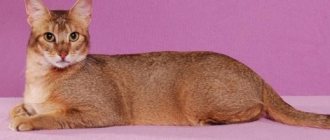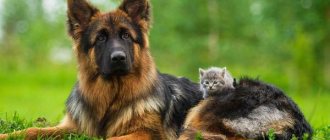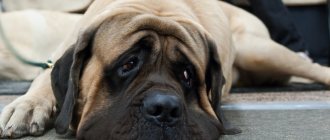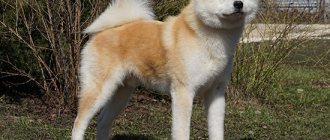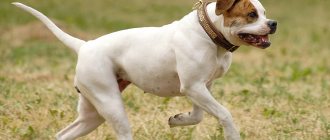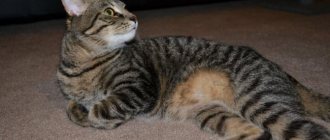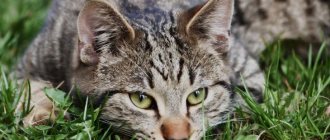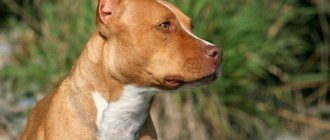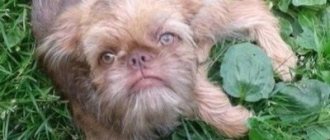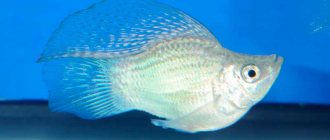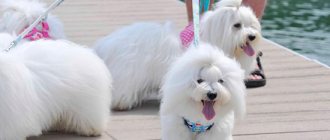History of the American Curl breed
The American Curl breed was born at the end of the 20th century in the USA. The ancestor of the breed was an unusual cat named Shulamith: it was she who had atypical ears turned inside out.
A unique pet ended up in the home of people who were far from deep knowledge about the world of cats and, moreover, were not felinoids. They kept the unusual cat for themselves, and in 1981 she gave birth to her first litter. What is noteworthy is that all the kittens born in the litter received an unusual heredity from their mother: small curled ears.
The photo shows typical representatives of the American Curl breed
The couple, who accidentally bred such remarkable kittens, turned to professional felinologists, who experimentally found out that the specific ears are the result of a genetic mutation. The gene that transmits this feature is dominant, so the offspring of Shulamith, when mixed with a cat of any other breed, automatically acquired the same ear shape.
Already in 1987, the TICA association officially recognized the American Semi-Longhair Curl breed, and shorthair cats were recognized a little later: in 1991.
Price for a kitten
As already noted, the breed is not widespread in Russia, so it is better to buy kittens in special nurseries. It is best if the future pet is four months old and the curlicue ears have acquired their characteristic features.
The price depends on the class of the animal.
For pets it starts from ten thousand rubles, and for a show-class kitten it can range up to two thousand dollars.
That is why it is extremely undesirable to purchase babies from random people, since they can easily deceive you by passing off another, less purebred cat as a Curl.
External features
When mentioning the description of the American Curl breed, it is enough to remember the ears of these pets: it seems that cats are always eavesdropping on something. The breed has its own characteristics, which makes it possible not to confuse them with any other breed.
Curl ears are what sets them apart from other cats.
Dimensions and weight
According to the standard, the Curl cat breed weighs no more than 8 kg. Males may be slightly larger than females, but in general the breed is of average size.
Anatomical characteristics
American Curls have small muzzles with rounded shapes, wide and slightly slanted eyes. The ears of these pets are curved back and have small rounded tips, the inversion of the ear cartilage is no more than 180 and no less than 90 degrees.
The degree of folding of ears varies within the breed standard
The pet’s body is strong and muscular; Curls themselves are well-fed cats, but despite this they are flexible and active. The front and hind legs are of medium length, with soft, round pads. The tail is usually equal to the length of the body, it has no bends or creases, is bushier at the base and pointed at the end.
Color and coat type
The breed is divided into two varieties: longhaired and shorthaired curl. In two cases, the undercoat under the cover is completely absent, the coat itself is soft and close-fitting. The color can be any: black and any other solid color, tortoiseshell, Siamese, tabby and various points.
The longhaired American Curl has a thick, close-lying coat with virtually no undercoat.
Diseases
The American Curl is a healthy breed, and no genetic pathologies were recorded in any individual. But improper care can provoke many diseases.
- Obesity.
- Diabetes.
- Allergy.
- Oral diseases.
- Urolithiasis (pyelonephritis, chronic renal failure).
- Worms.
- Myocarditis, myocardosis.
- Ear mites.
Be sure to give your cat all the necessary vaccinations, even if you do not let him out for walks. Calcivirosis, feline distemper, ringworm - the causative agents of all these ailments can be easily brought home by you yourself: on the soles of shoes, the edge of a jacket or on your hands. Treatment will be expensive, long and without guarantees of recovery. And rabies, which is transmitted through a bite, cannot be cured at all.
Expert opinion
Dusheba Vera Ivanovna
In 2010, she graduated from the Moscow State Academy of Veterinary Medicine named after K.I. Scriabin with honors, specializing in veterinary medicine. I regularly attend veterinary conferences, congresses, and webinars.
Curls can be mixed with cats of other breeds similar in standard. In this case, kittens are almost always born without serious deviations, but there will be noticeably fewer individuals with curls in the litter if two Curls were brought together.
American Curl Personality
The American Curl can win the palm as the most good-natured and affectionate feline. Yes, there are a lot of such breeds, but you can be 100% sure of these guys: it’s hard to imagine what could force the sweetest Curl to show aggression.
The American Curl cat is very attached to its owner and loves to spend as much time with him as possible. He will rub against his owner's legs in any everyday situations; for this pet it is important to be near his loved one. For the American Curl, affection and reciprocity of the feelings he shows are important, but besides, he is absolutely unobtrusive and does not require special treatment.
The Curl's character is dominated by curiosity, but the breed is not distinguished by selfish habits and obsessive demands
IMPORTANT: Curls are very smart, they easily learn to carry out simple commands and have no problems accepting their owner’s requests.
Representatives of the breed easily adapt to new conditions, they are not afraid of moving or long travel: the main thing is that the owner is nearby. Curls get along well with other pets and children, but small animals can be the target of a cat's hunting instincts. A good-natured predator will try to get to its “prey”, so it is better to remove rodents, birds and fish to places where the cat cannot reach them.
Curls easily find contact with their own kind, dogs and children
Character and behavior
The American Curl is similar to Winnie the Pooh from a children's fairy tale: just as spontaneous and sometimes awkward, but sweet, playful and very kind. Cats of this breed completely lack the arrogance and desire to roam “on their own” that is inherent in many of their brothers: they adore people, crave company and are ready to spend the day and night next to their beloved owner.
Curls are alien to obsession: they will come running at your first call and come to wake you up with the first rays of the sun, but they will not restlessly crawl into your arm or meow mournfully in your ear, demanding entertainment. The sensitive Curl understands perfectly well when it is possible to climb onto your lap, and when it is better to hold off and stay away.
This breed absolutely does not tolerate loneliness, it grieves in separation so much that neither delicious food nor an abundance of toys can distract it from sad thoughts. Think ahead: can you give your clawed friend the right amount of attention? If your job requires frequent travel, daily deadlines, and long hours away from home, choose a cat of a different breed.
The American Curl is an attentive and fast hunter, a real threat to all small rodents and annoying insects. Therefore, such a cat and, for example, a tame rat, will not get along in the same territory. But the Curl will perfectly find a common language with other cats and even dogs and, if it does not make friends, it will not provoke any clashes or conflicts.
What does this pose mean in cats: crouching to the ground, arching their back, starting a mournful song?
Mating gamesPreparing for a fight
Adapts quickly to new surroundings and tolerates moving easily. He is not afraid of the bustle of the station, the noise of the plane and long journeys by car, the main thing is that his loved ones are nearby.
He does not shy away from guests, on the contrary, he tries in every possible way to greet them. He takes noisy companies with a bang and strives to get into the thick of the crowd. Easy to train: a curl can be trained to suit you and even learn some tricks and commands.
But remember that a cat remains a cat in any situation. Your tone should always be soft and affectionate. No swearing or swinging a slipper! Even such purrs as curls have a sense of self-esteem, which means that they can easily be offended by an orderly tone. Young animals grasp information on the fly, but it is much more difficult to persuade adults to do a somersault for a piece of liver.
Curls love walks and active games in the fresh air, so don't forget to buy a harness. The first walk can be taken no earlier than 3 months (the animal must be wormed and vaccinated in advance).
And remember: this breed has a real sense of adventure. Climbing into the drum of a washing machine (and getting stuck there), falling off a balcony, getting your head stuck in a jar, biting wires and getting an electric shock, knocking over a trash can, knocking all the flower pots off the windowsill - the list goes on and on. The owner will have to hide in advance everything that is prickly, cutting and anything that can fall and break.
You can buy a cat of the American Curl breed not only in the USA, where breeding is on a grand scale, but also in Russia, in St. Petersburg. Kittens are separated from their mother at the age of 4 months. A baby for home (without documents) costs 3-10 thousand rubles, for mating - 10-20 thousand, a cat for exhibitions - 25,000 rubles and more.
In the photo there is a cat of the American Curl breed: shorthair and longhair
Maintenance and care
American Curl care can be called “standard”: the breed is undemanding in terms of living conditions. But still, let’s highlight points that will help future owners formulate a competent curl maintenance program:
- The American Curl is an extremely curious pet. They will study all the window sills, cabinets, shelves and other secluded places. He will love to explore everything within his reach, so it is best to remove unsafe items, especially wires and household cleaning products, from his reach.
- The full and happy life of the American Curl consists of new experiences, and frequent walks in the fresh air will help the inquisitive pet with this. The breed is characterized by great activity, so leaving the Curl in the care of toys and treats will not work.
- Like any cat, the Curl will need a comfortable bed, tray, litter, scratching posts, and bowls for food and water.
It will be better if your pet has a multi-level loophole with built-in scratching posts for independent play.
- Once a week, your pet needs to brush its teeth, wipe its eyes and ears with a napkin every two weeks, and trim its nails every three weeks. It would be a good idea to brush your pet once a month, especially for long-haired Curls.
- Choosing the right nutrition plays a key role. A high-quality diet will strengthen your pet’s immunity, preserve its beauty, healthy activity and love of life.
- Vaccination, treatment against worms and other parasites are mandatory procedures that protect the pet’s health from diseases and related complications.
Castration and sterilization
Sterilization and castration is the best option if you do not plan to breed animals. This will save the health of the pet and the nerves of the owners.
Castration of cats is carried out at the age of 7–9 months, when the animal has reached sexual maturity, but before the first mating. The recommended age for cat surgery is 5–7 months, before the first heat. This will reduce the risk of developing breast cancer, hormonal imbalance, diseases of the uterus and ovaries.
The older the animal, the greater the likelihood of complications after castration/sterilization. There are contraindications in which surgery is not possible:
- diseased animal heart;
- liver diseases;
- exhaustion of the body;
- infectious diseases;
- chronic kidney disease;
- unhealthy genitourinary functions;
- purulent abscesses around the genitals.
Surgeries to remove genital organs are usually performed under general anesthesia. Cats need two days to fully recover from anesthesia, males - alone. During this time and during the rehabilitation period, which can last up to 15 days, the animal requires care:
- After the operation, it is better to leave the cat in the clinic for 2-3 hours under the supervision of a doctor.
- At home, place your pet on oilcloth and cover with a blanket.
- Keep away from bright light, drafts and loud sounds.
- After anesthesia, a cat sleeps with its eyes open, to prevent the mucous membrane from drying out, periodically close its eyelids.
- The animal may have poor coordination; do not allow it to climb onto elevated surfaces.
How to feed curls
The owner of an American Curl will often observe his plaintive singing when trying to beg for a piece of treat. These cats love to eat and will taste anything that smells edible.
Needless to say, most “goodies” are unsuitable for a cat’s diet? So be prepared for this and leave the tables clean: this hunter will steal the last cookie and wash it down with the same coffee that you forgot a couple of hours ago.
A healthy American Curl diet includes premium dry food and natural products (at least 20% of the total diet). It is useful to pamper your pet with lean lean meat, lean fish no more than once every two to three weeks, boiled vegetables and cereals.
A Curl interested in food will check all the kitchen bins if at least one loophole is left open and accessible.
Occasionally you can treat your cat with pork cartilage, but under no circumstances should you give fish or other bones. Vitamin supplements with a high content of calcium and other essential elements that will help maintain normal pet health will not be superfluous.
It is important that your pet has free access to a replenished supply of clean and fresh water. It is worth remembering that domestic cats are very susceptible to developing urolithiasis and one of its most common causes is dehydration due to regular consumption of solid food.
Catering
Curls love to eat, and they are not particularly picky: they will not disdain to get into a trash can, and they will try to steal a piece of wrapped meat from a bag. And this is fraught with serious stomach problems. When choosing a nutrition system - whether a natural menu or ready-made food - remember that the food must be balanced, the products must be fresh, and the portions must be appropriate to the physical condition and age of the animal.
Babies eat at least 6 times a day, teenagers (at 4-5 months) - 4 times, over six months - 3 times, from one and a half years - 2 times: in the morning and in the evening. Bowls are washed after every meal. The water is also changed 2 times a day.
Natural products
- The basis of the Curl diet is meat (veal, rabbit, beef, turkey) and offal (stomachs, hearts, liver). The meat is not boiled, but defrosted and doused with boiling water. Offal can be stewed or served raw.
- 4-5 times a week cats are fed porridge cooked in water: rice, oatmeal, millet, buckwheat. Liquid semolina porridge with milk can be given to babies.
- Add boiled chicken egg white to the porridge 1-2 times a week. Quails are crushed whole.
- Vegetables (carrots, zucchini, pumpkin, cabbage, beets, green beans) are stewed, but if the cat wants to chew on a raw cucumber, do not forbid it. Cucumbers, like melons, are allowed.
- Almost everything can be given from dairy products: cottage cheese, sour cream, cream, kefir, natural yogurt, Varenets, yogurt, unsalted cheese. Choose products without dyes, flavor enhancers and other harmful additives.
What is it forbidden to give to Curls?
- Fatty meat: pork, lamb, goose and duck. It takes a long time to digest, and in addition, it is often contaminated.
- Fish (both sea and river).
- Whole cow's milk (if the Curl has not been accustomed to it since childhood).
- Tea, coffee, cocoa, juices and sparkling water, alcohol.
- Smoked, flour, sweet, salty, sour.
- Citrus fruits, avocados, eggplants, tomatoes, potatoes, legumes (chickpeas, peas).
- Dog food, human canned food, sausages, sausages, tripe.
- Bones, lard.
Recommended food
When giving preference to industrial feed, choose either super-premium or holistic feed.
- Holistic: Naturea, Now Fresh, Wellness CORE.
- Super premium: Husse, Ontario, Matisse, Meglium.
Below are recommended super-premium foods. Links with the names of the food are clickable, on them you can, within our website, get acquainted with the descriptions of the food and read reviews from owners of American Curl cats.
| Holistic | Super premium | Super premium |
| Savarra | Mera Finest Fit | Happy Cat |
To cleanse their stomach, wild cats eat a certain kind of grass that they find in the meadows. For pets, you can grow wheat or oats at home.
Pictured are kittens of the American Curl breed.
Health
The American Curl is a hardy and strong fighter with excellent health. They are susceptible to standard feline diseases, which can be prevented with a healthy diet and decent care, taking into account the specifics of the pet.
Curls remain attractive and in good health until old age.
IMPORTANT: the genetic mutation in the form of “special” ears did not affect the health of cats in any way and did not provide them with unnecessary congenital diseases.
Diseases and health problems
American Curls have no genetic diseases. They can be transmitted from cats of other breeds that have been crossed with the American Curl, but in general the cats are absolutely healthy and have strong immunity. American Curls are inactive and like to sit in one place, so they are prone to obesity, which has a negative impact on the cardiovascular system.
In addition, American Curls have allergies, but such issues are revealed only as the kitten grows and develops. There are a number of non-serious diseases that can occur in American Curls. Most of them are the result of improper or insufficient care and feeding.
Such diseases include:
- Dental disease, when the cat does not eat enough dry food or does not chew anything at all;
- Inflammation of the genitourinary tract;
- Cystitis;
- Worms.
The most common problem that American Curl owners face is ear inflammation. Their ears have a very narrow ear canal, so their ears need to be carefully cleaned, not irritated, and checked regularly by a veterinarian.
All of these can be easily treated with the intervention of a veterinarian or inexpensive medications. Of course, it is worth regularly vaccinating American Curls and following the rules of care - then the cat will live a long and healthy life. By the way, American Curls live a very long time: up to 18 years. They are record holders among purebred cats.
Advantages and disadvantages of the American Curl
Among the many advantages of the American curl, we highlight a number of the most outstanding:
- The unique appearance is what is remembered at first sight when you see a charming Curl. With its unusual appearance, the pet will amuse and delight its future owner every day.
- Curl cat with a disposition that deserves special attention. The pet's character represents exactly what any owner desires - a complete absence of aggression along with endlessly given affection and tenderness.
American Curl – suitable for those who are looking for a non-boring, but at the same time, pet
- The good health of curls does not fail them until old age and will not cause trouble to the owner. The only condition is regular and high-quality care.
- The breed gets along well with pets and children, which is definitely a plus for a large and friendly family.
The disadvantage of a breed is rather subjective and can frighten people with a sedentary lifestyle, as well as those who often leave home on the road and on business trips. Curls do not like a lazy lifestyle, and even more - loneliness. For this reason, it is worth weighing the pros and cons before getting a cat of this breed.
Pros and cons of the breed
The American Curl is a pet with no flaws. It is equally suitable for an elderly couple and a young family with children, people who love to receive guests or prefer privacy, homebodies or those who spend most of their time at work, and those who support keeping one or several pets. The only drawback is, perhaps, the high cost of kittens with excellent exterior. However, the ideal appearance of a pet is necessary only for professional breeders; most small flaws in appearance can only be seen by an expert felinologist or a very experienced breeder.
For most people interested in owning a four-legged pet, an animal that looks slightly different from the ideal would be perfect. Such a kitten will become a devoted friend to you and your children, the spoiled child of the family for many years - after all, Curls are distinguished by good health and longevity.
How to choose and buy an American Curl
The price for an American Curl kitten reaches $250-600. When choosing a Curl kitten, there are a number of factors to consider:
- The future owner should contact a specialized nursery with a good reputation and professional breeders.
- Some kittens may have straight ears even though the rest of the litter may have the characteristic rounded ears. This phenomenon is considered normal and sometimes occurs even among elite representatives of the breed. This is due to the fact that not only representatives of the breed are used for mating, but also ordinary outbred cats and females, which gives such a 50% result.
- Parents and litter must be kept in decent conditions; the care and maintenance of pets is the reputation of the breeder and an indicator of the level of his responsibility.
- The kitten must be clean and well-groomed, show healthy activity and curiosity about the world around it. At the age of three months, the kitten becomes independent and ready for new living conditions.
Description
As with any breed, the main thing for curls is harmonious proportions. Since the ancestors are ordinary cats, there is nothing unusual in the constitution of the animals. Normal weight should not be less than three and more than six kilograms.
American Curls have excellent health and are among the longest-livers in the cat world. Read about how long cats live.
Appearance
Apart from the specific shape of the ears, externally Curls are no different from ordinary domestic cats:
- they have a flexible and strong body;
- wedge-shaped head;
- scissor bite;
- proportionally folded paws;
- long pointed tail.
Various colors are allowed, the main thing is that if there are several colors, they are harmoniously combined with each other. Experts distinguish between smooth-haired and long-haired animals. But in both cases, the coat should be healthy and beautiful.
The length of the undercoat is so minimal that even in long-haired cats, the shedding process does not create problems for the owner.
Curls with an all-white coat may be deaf from birth.
Ears
Since the ears are a distinctive feature of the breed, characteristics have long been developed to determine their uniqueness.
Experts note that newborn kittens do not have a specific curve, and the auricle begins to change from the second day after birth and acquires its final rounded shape by four to five months of age. Curly ears should be turned back at an angle of 90 to 180 degrees and have a fairly rigid cartilaginous structure.
The laws of inheritance of curls have not yet been sufficiently studied. Therefore, when purchasing a Curl with strong ear curls, you need to be prepared for the fact that these qualities may not be transferred to the kittens and the ears may not be as curled as those of the parent.
Character
Some scientists are convinced that American Curls are one of the smartest cat breeds on the planet today. They are very friendly and inquisitive; unlike other cats, they are very active and do not lose these qualities even at an advanced age.
Thanks to their friendliness, they get along well with small children and other animals. Despite the predatory component, when properly raised, curls calmly react even to domestic parrots and fish in the aquarium, without attempting to hunt them.
At the same time, tolerant behavior can create difficulties for these noble animals if they are released to free range, since they will not be able to resist their more aggressive relatives.
It is best to take them out into the open air using a harness, which they quickly get used to.
Curl owners note that, unlike other cats, their pets do not need to repeat the “no” command twice. They are very neat and will never allow themselves to knock over a flower pot or tear apart the furniture.
They also show interest in house guests and express affection, allowing themselves to be petted and played. At the same time, “Americans” never impose their society.
Separation from the owner is difficult to bear, and they may even fall into depression, which will pass with the end of the separation. Read about stress in cats.
Another feature of this breed is that curls very rarely voice and there may be several reasons for this:
- they need the owner's help;
- it's feeding time;
- You need to change the filler in the tray.
Education and training
American Curls have a somewhat “dog-like” character. In other words, this is a breed that can be raised “to suit you” and even taught some tricks. The main thing is not to make excessive demands on the mustachioed good fellow, because he is just a cat and, in general, he has paws. However, learn individual dog commands, such as “Come to me!” or “You can’t!”, kitties are able to.
We're sitting well
When training an American Curl, it is necessary to take into account the mental characteristics of cats as a whole. For example, never repeat a command several times or modify it. An animal simply will not understand you if today you order it to “Sit!”, and tomorrow you simply invite it to “Sit!” Commands should be given in a soft but convincing tone. Remember, cats are not dogs and will not allow you to push them around. Give up the method of negative reinforcement in favor of positive one: give your American Curl treats even when he hasn’t coped with the job and be sure to praise him. And of course, don’t delay your upbringing: the older a Curl gets, the more difficult it is to convince him of the need for training. Yes, he may be the universal cutie and the most good-natured pet in the world, but this will not stop him from shirking his classes and turning on the “invisibility” mode.
